Updated: 2-25-25
If you’ve never sunk a straw into a tall, ice-cold glass of sugarcane juice, friend, buckle up—you’re in for a sweet ride. Around the globe, from sizzling Southeast Asian food stalls to tropical fruit stands in North Africa, sugarcane juice is the refreshment of choice for millions of people. One taste of this naturally sweet, vitamin-packed beverage and you’ll understand why it’s taking the world by storm. Today, we’re going to explore where sugarcane juice reigns supreme, how it’s served, and the big question on everyone’s mind: “Why is sugarcane juice healthy but not sugar?” So, let’s embark on a flavorful journey that will leave your taste buds tingling, your mind spinning with new facts, and your potential customers clamoring for this delight on your menu.
What Is Sugarcane Juice?
At its core, sugarcane juice is simply the extracted liquid from raw sugarcane stalks. Vendors typically press these fibrous stalks through machines—hand-cranked or motorized—to squeeze out every last drop of juice. The result? A cool and refreshing beverage that boasts a bouquet of natural sweetness with surprisingly complex flavors. People love sugarcane juice not just because it tastes great, but also because it offers a medley of vitamins, minerals, and antioxidants. Potassium, calcium, magnesium, iron—you can find all these nutrients (and more) swirling around in that golden liquid.
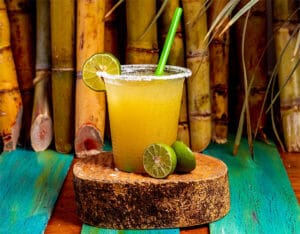 The Rise of Sugarcane Juice in the Global Market
The Rise of Sugarcane Juice in the Global Market
Sugarcane juice has found its way into small fruit stalls, bustling juice bars, and even high-end cafés, turning heads and satisfying thirsty customers. More and more commercial establishments are investing in specialized sugarcane juice machines to serve up this vibrant drink. You might even stumble across variations that fuse sugarcane juice with fresh fruits or herbs—each twist serving as a cultural marker of the region you’re in. Let’s take a whirlwind tour of just a few places where sugarcane juice is beloved and consumed daily.
A Summertime Favorite in Myanmar: kyan ye, Healthy Sugarcane Juice
If you’re wandering the colorful streets of Myanmar during one of its balmy summer days, you’ll likely notice small stands decorated with piles of sugarcane stalks. Locally known as kyan ye, sugarcane juice in Myanmar is a mainstay for anyone seeking relief from the sweltering heat. Sure, you can drink it plain—its natural sweetness is enough to please any palate—but local vendors love taking it up a notch by mixing it with lime, orange, or even jujube fruit. The result is a wide palette of flavors, all anchored by sugarcane’s signature sweetness.
 Street Food Culture and Community
Street Food Culture and Community
Myanmar’s culture is vibrant, and street food is a big part of the local identity. During the scorching summer months—or at festivals like Thingyan, the Burmese New Year water festival—you’ll see sugarcane juice everywhere. Vendors often set up makeshift stands equipped with simple pressing machines. They’ll feed in the stalks, then out comes the liquid gold, sometimes right before your eyes.
- Cool Down Factor: In tropical climates like Myanmar’s, staying hydrated is essential. Sugarcane juice provides a quick natural energy boost without the processed chemicals or additives found in many commercial beverages.
- Festive Refreshment: During Thingyan, sugarcane juice competes with other refreshing drinks to help people cool off. Given the communal spirit of the celebration—water fights, street parties, and general revelry—having a cup of fresh kyan ye in your hand just feels right.
Whether it’s sipped alone or enhanced with a bit of tangy citrus, sugarcane juice fits seamlessly into Myanmar’s everyday life, offering a slice of local culinary tradition alongside a thirst-quenching reward.
Iced Fresh Sugarcane Juice in Indonesia: Jus Tebu
Ready to hop over to another corner of Southeast Asia? In Indonesia, jus tebu (the local name for sugarcane juice) is immensely popular, and for good reason. This beverage has an ancient heritage dating back to at least the ninth century. Over the centuries, sugarcane cultivation spread throughout the region, powered in large part by Indian traders and cultural influences. Today, you’ll often see jus tebu sold by street-side vendors, but it’s also making its mark in malls and shopping centers—proving that the old and the new can coexist with refreshing synergy.
Cultural Traditions and Modern Echoes
Much like Myanmar, Indonesia experiences long stretches of hot, humid weather. Naturally, a tall glass of iced sugarcane juice is the perfect antidote. When it’s pressed fresh on the spot, you’re getting the pure sweetness of the cane plus any additional flavors vendors mix in. And that’s not all: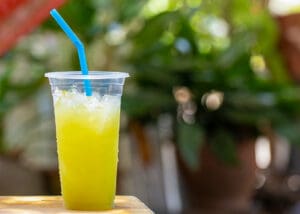
- Symbol of Abundance: In Indonesian culture, sugarcane often symbolizes prosperity and fertility. Weddings, harvest celebrations, or even spiritual events might feature sugarcane in some form—whether that’s the juice itself, sugarcane stalks for décor, or sweet treats made from sugarcane.
- All-Ages Appeal: From kids licking dripping cups of juice on a hot day to older adults seeking a taste of childhood nostalgia, jus tebu cuts across demographics. It’s common to see entire families gathered around a small stall, slurping it down through straws.
Even though the beverage has historical roots, modern Indonesian entrepreneurs and foodies are getting creative—mixing in fruit juices, serving it in contemporary cafés, and even pairing it with savory snacks. That’s the magic of sugarcane juice: it’s flexible enough to mold to tradition or innovation, depending on the environment.
A Lemony Twist in Egyptian Sugarcane Juice Bars: Asab
Now let’s jet over to North Africa, where Egypt proudly showcases its own spin on sugarcane juice. Known locally as asab, Egyptian sugarcane juice is a staple in busy city markets and tranquil village corners alike. Thanks to the fertile banks of the Nile, sugarcane farming in Egypt is massive, fueling an industry that not only supplies local markets but also reaches international shores in various forms of sugar products.
A Proud Agricultural Tradition
Egyptians have been perfecting sugarcane cultivation for centuries—if not millennia. This deep agricultural heritage resonates in modern sugarcane juice bars and street stalls, where you’ll see the cane stalks stacked high, ready to be pressed into fresh juice. Here’s the fun part: in addition to classic sugarcane juice, some Egyptian businesses like to take it further by mixing in lemon and letting the concoction ferment.
- Fermented Innovations: This lemony twist can produce a slightly tangy, effervescent beverage that cuts through the cane’s natural sweetness. It’s a growing trend, especially among folks who enjoy artisanal-style drinks.
- Local Communal Culture: Just like in Myanmar and Indonesia, the act of buying sugarcane juice in Egypt isn’t just about quenching thirst; it’s a social experience. Street vendors love to banter, and sipping a tall glass of asab is a convenient excuse to slow down and people-watch.
In a nutshell, sugarcane juice has evolved to become an emblem of Egyptian culinary pride. Whether you’re guzzling down the standard fresh press or sipping on a fermented lemon variation, you’re partaking in a longstanding tradition that showcases both the agricultural might and innovative spirit of this captivating nation.
 Metal Street Cart Sugarcane Machines in Vietnam: Nước Mía
Metal Street Cart Sugarcane Machines in Vietnam: Nước Mía
Let’s make one more stop in Southeast Asia—Vietnam—where sugarcane juice, or nước mía, is a super popular street food treat. Picture a bustling Vietnamese street corner: scooters zigzagging by, the aroma of grilling meats in the air, and somewhere in the middle of it all, a metal cart with a hand-crank or motorized contraption designed to crush sugarcane stalks into sweet oblivion. That’s nước mía for you—simple, fresh, and unbelievably good.
Serving It in a Bag
One uniquely Vietnamese tradition is serving sugarcane juice in a plastic bag filled with ice. Vendors pop in a straw, tie the top of the bag around that straw with a rubber band, and hand over your portable cup of happiness. The juice is typically sweet enough on its own, but some vendors add a splash of kumquat or a dash of lime to cut through the richness and deepen the flavor profile.
- Symbol of Authenticity: The unmistakable sight of a hand-crank sugarcane machine is practically synonymous with Vietnamese street food. This direct, old-school extraction method emphasizes authenticity—something both locals and tourists find irresistibly charming.
- Community Vibe: Stopping for a bag of nước mía isn’t just an individual act; it’s a snapshot of daily life. You might chat with the vendor, learn about local produce, or even exchange travel tips with fellow customers. The beverage itself invites you to linger in the moment.
Why Sugarcane Juice Continues to Thrive
It’s no accident that sugarcane juice is riding a wave of global popularity. It marries health benefits with a sweet and gratifying flavor—qualities that are increasingly valuable in today’s market of health-conscious consumers. Add in the flair of cultural identity and tradition, and you get a drink that appeals to both local loyalties and tourist curiosity.
Health Benefits Galore
- Natural Energy Booster: The unrefined sugars in sugarcane juice provide a slow-release energy source, which is a great pick-me-up in hot climates or anytime you’re feeling run-down.
- Packed with Nutrients: Vitamins like vitamin C, minerals such as magnesium and potassium, and an array of antioxidants help bolster your immune system and support overall well-being.
- Hydration Hero: The high water content in sugarcane juice makes it a powerful thirst-quencher. Add a little ice, and you’ve got instant refreshment.
The Sugarcane Juice Advantage for Your Business
If you’re running a restaurant, café, or juice bar, you might be asking, “Should I add sugarcane juice to the menu?” Absolutely! Not only does it bring a unique, exotic flavor to your lineup, but it also checks the box for health-conscious customers seeking nutrient-rich drinks. Plus, sugarcane juice is a conversation starter. People love discovering something new—and if that “something new” happens to taste amazing, you’re on your way to turning them into loyal fans.
The Right Equipment Matters
To serve sugarcane juice commercially, you’ll need a durable, efficient sugarcane juicer. Here’s what you need to know: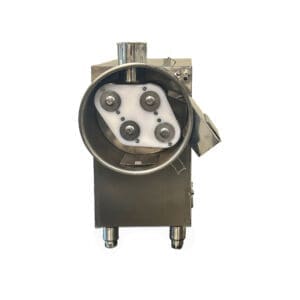
- Quality and Reliability: A robust sugarcane juicer ensures you get the maximum yield from each stalk without constant breakdowns.
- NSF Certification: Health Department compliance should be top priority. Juicernet happens to be the sole provider of NSF-certified sugarcane juicers, ensuring you’re meeting strict hygiene and safety standards.
- User-Friendly Design: Some machines come with easy-to-clean parts and safety features. This not only saves time but also ensures the process of extracting juice remains hassle-free for you and your staff.
Offering sugarcane juice can create a marketing advantage: once you display that “Sugarcane Juice Available Here” sign, you’ll likely catch the eye of passersby craving an authentic, nutritious refreshment.
Why Is Sugarcane Juice Healthier Than Refined Sugar?
It seems counterintuitive, right? Both sugarcane juice and refined sugar come from the same plant, so why does one earn the health halo while the other gets demonized by nutrition experts? Let’s break it down.
Nutrient Density and Natural Matrix
When you drink sugarcane juice, you’re getting the vitamins, minerals, and antioxidants that are still intact from the raw plant. Refined sugar, on the other hand, undergoes extensive processing that strips away everything but the sucrose. In simple terms, sugarcane juice offers genuine nutrients alongside its sweetness, while refined sugar is basically sweet, empty calories.
Fiber and Digestion
Sugarcane juice often retains a small amount of the plant’s natural fiber—though the exact amount can vary depending on how it’s processed. This fiber helps slow down the absorption of sugars into your bloodstream, preventing dramatic spikes in blood sugar levels. Refined sugar, stripped of all fiber, hits your system quickly and can cause roller-coaster peaks and crashes in energy.
Processing and Health Implications
Refined sugar is notorious for contributing to issues like obesity, insulin resistance, and various chronic diseases when consumed in excess. Sugarcane juice, when enjoyed in moderation, provides a spectrum of nutrients that can support everything from immune function to maintaining healthy electrolyte levels—especially important if you live in or travel to hot climates.
Moderation Is Still Key
Here’s the thing: sugarcane juice is not a magical elixir. It still contains natural sugars, and overconsumption can lead to health concerns. That said, it’s a far smarter choice than chugging a soda made with high-fructose corn syrup. When balanced as part of a broader healthy diet, sugarcane juice can offer a flavorful way to stay hydrated and nourished.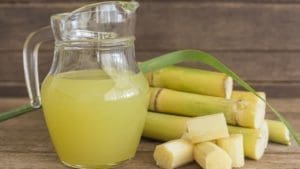
Spotlight on Serving Styles: From Pure to Creative Fusions
One of the most exciting things about sugarcane juice is how it pairs with other flavors. Around the world, you’ll encounter countless variations. Some popular combos include:
- Citrus Zest: Lemon, lime, or even kumquat juice helps cut through the sweetness, delivering a tangy twist.
- Fruity Fusion: Orange, pineapple, or jujube can introduce exciting taste layers, while still allowing the sugarcane essence to shine.
- Herbal Infusions: Mint or basil can add an aromatic flair, creating a refreshing synergy that’s both cooling and invigorating.
- Fermented Flair: As in Egypt’s lemon-fermented concoction, some artisans are experimenting with fermentation to create unique sugarcane-based beverages with subtle tang and effervescence.
No matter where you are or how you prefer your flavor combos, the heart of the drink remains the same: that sweet, refreshing sugarcane foundation.
Tips for Introducing Sugarcane Juice on Your Menu
If this global tour has piqued your interest, you might be eager to bring sugarcane juice to your customers. Here are some tips to make a splash: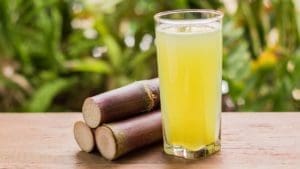
- Market It Right
Emphasize both the exotic appeal and nutritional benefits of sugarcane juice. You can label it as a “tropical treat” or a “naturally sweet energy booster.” Showcase photos of the fresh sugarcane stalks and the juicing process to evoke curiosity and highlight freshness. - Offer Variety
While the pure sugarcane flavor can’t be beat, some customers might enjoy a citrus blend or a creative fruit infusion. Consider a small “sugarcane juice menu” featuring a few well-curated flavor mixes. - Train Your Staff
Make sure your team knows how to operate and clean the juicer correctly to ensure consistent quality and hygiene. They should also be prepared to educate curious customers who ask about sugarcane juice’s origins or health benefits. - Highlight Your Equipment
If you’re using an NSF-certified machine, such as those provided by Juicernet, don’t be shy about sharing that information. It signals that you’re serious about quality and cleanliness—a huge plus for health-conscious patrons. - Seasonal Specials
If you’re in a region where sugarcane is easier to source during certain times of the year, capitalize on that. Feature sugarcane juice as a seasonal offering. Limited-time specials can create a sense of urgency and boost sales.
Bringing It All Together: The Global Love Affair With Sugarcane Juice
From the sweltering days of a Burmese summer to the bustling avenues of Jakarta, from the streets of Cairo to the lively corners of Ho Chi Minh City, sugarcane juice has woven itself into the cultural, social, and economic fabrics of countless communities. Its appeal is both ancient and modern, traditional yet open to creative reinterpretation.
Why does it endure? Maybe it’s the perfect confluence of flavor, nutrition, and custom. Or maybe it’s something deeper—the sense of connection people feel when they watch a vendor press the juice by hand or share a sweet sip with friends and neighbors. Sugarcane juice, in many ways, underscores our fundamental desire for authentic, nourishing experiences—especially in a fast-paced world where processed snacks and drinks dominate.
Final Thoughts: Sweeten Your Offerings (The Right Way)
Sugarcane juice stands tall as a healthier alternative to refined sugar, offering vitamins, minerals, and antioxidants in a naturally sweet package. But that’s not all: it’s brimming with cultural richness, global appeal, and business potential. If you’re an entrepreneur or a restaurateur looking to up your beverage game, sugarcane juice is your ticket to making a splash. Secure the proper machinery—like the NSF-certified juicers from Juicernet—train your team, and wow your customers with a sweet, refreshing drink that also makes them feel good about their choice.
So go ahead. Bring the taste of balmy summer nights in Myanmar, the bustling malls of Indonesia, the creative lemon twists of Egypt, and the iconic street carts of Vietnam straight to your menu. Let sugarcane juice be your global passport to delighting taste buds, educating your audience, and introducing a culturally rich, truly satisfying beverage that’s as good for the soul as it is for your bottom line.
Ready to explore the sweet possibilities of sugarcane juice for your business?
Juicernet is here to equip you with reliable, NSF-certified sugarcane juicers that make fresh, sweet, and refreshing sugarcane juice a reality in your commercial kitchen. Let your customers experience a slice of global food culture—right from your counter. Visit Juicernet today to discover how sugarcane juice can become the star of your beverage lineup.


